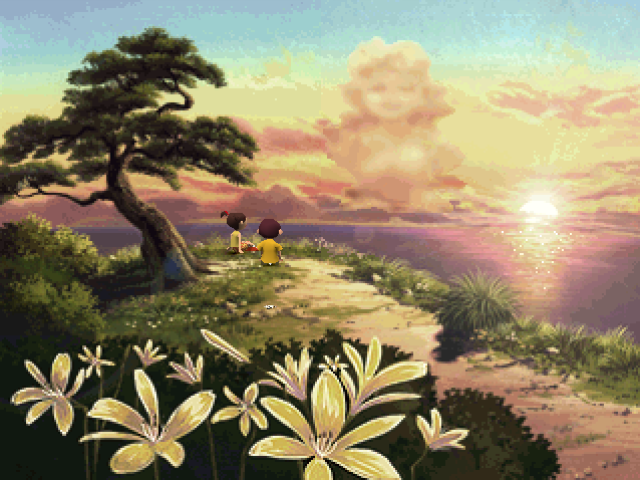Hello readers,
Yes, that time of the month has arbitrarily arrived: videodiscourserounduptime. For the final time in 2021, no less. I feel like I should say something grand here to mark the turning of pages, but I have nothing. It’s been a year. Thank you essayists for all the videos. Thank you readers for reading and recommending. Thank you Patreon-backers for funding us. Thank you Chris for steering the ship. May there be more to come.
December is also the time when we look back on a whole year’s worth of videogames criticism, so if you have any favourite pieces from this year you think should be considered (including videos (if there’s a transcript attached)) for the much-heralded annual This Year In VideoGame Blogging roundup, get them in while the submission window is open.
This Month In Videogame Vlogging highlights the most compelling critical videos about videogames from the previous calendar month.
Changers of Course, of course
In this trio of videos, we cast our gaze back to the 1980s to explore the non-linear and messy processes of design evolution.
-
Samus Aran Origins: Metroid’s Influences Beyond Alien – A Critical Hit! | “Critical Kate” Willært (25:06)
Critical Kate (no relation) makes a thorough (and thoroughly entertaining!) study of the various earlier games and other media to inspire the narrative, gameplay, and visual design of the original Metroid (1986). (Manual captions)
-
Trackers: The Sound of 16-Bit – Ahoy (41:11)
Ahoy charts the evolution and influences of digital music creation ‘tracker’ software for home computer systems through the 1980s and 90s. (Manual captions)
-
The Animation of Final Fantasy II – New Frame Plus (15:33)
Dan Floyd shows how the subtle evolutions of character animation between Final Fantasy and Final Fantasy II reflect the latter’s greater emphasis on narrative. (Manual captions)
Containing Multitudes
A few essayists chose November to release lengthy video explorations (of, respectively: a studio; a console era; a concept) wherein the essayist plays and analyses numerous games within the relevant frame to draw together some broader ideas.
-
Ninja Theory: A Retrospective – Pixel a Day (2:00:46)
Kat evaluates each of studio Ninja Theory’s four main titles (Heavenly Sword, Enslaved: Odyssey to the West, DmC: Devil May Cry, and Hellblade: Senua’s Sacrifice) to draw out patterns of narrative and technical innovations, publisher pitfalls, critical successes, and commercial disappointments. (Manual captions)
-
Mysterious PS3 Games – ThorHighHeels (1:54:05)
ThorHighHeels looks for plusses amongst the jank of a full crate’s worth of PS3 titles, expounding upon some of the console generation’s visual tics (‘the PS360 aesthetic’) along the way. (Autocaptions)
-
I played 15 nonviolent narrative indie games because ew blood – Micah Edmonds (3:44:43)
Micah Edmonds continues his exploration of whether (narrative) games can effectively mechanically engage a player if violence is taken out of the question, by reviewing fifteen non-violent videogames. (Autocaptions)
Violent Agendas
This next trio make insightful and thought-provoking readings about the role of death and violence in games.
-
Time Loop Nihilism – Jacob Geller (26:45)
Jacob Geller finds that murder-filled time loop games Death Loop and Twelve Minutes fail to offer the protagonist characters a way back from a life of endless, ‘inconsequential’ violence. (Manual captions) [Embedded advertising]
-
Yakuza 6 Might Be Propaganda – GC Vazquez (1:35:25)
Instead of a fulfilling conclusion for recurring series protagonist Kazuma Kiryu in Yakuza 6, GC Vasquez finds a disappointing trend of xenophobic and misogynistic characterisations, many of which the game seems to be positioning the player to sympathise with. (Manual captions)
-
The Failings of Failstates – Soft & Hollow (12:30)
Soft & Hollow weighs up the purpose and execution of death mechanics/fail states in several popular horror and horror-adjacent titles. (Manual captions)
Good Times Appreciation Society Club Group
Finally for November 2021, we check in with the month’s best critically-edged open fan letters.
-
What Makes These Final Fantasy XIV Quests So Funny?? – Games As Literature (13:05)
The Games Professor explains how Final Fantasy XIV character Hildibrand (the Gentleman of Light) provides some exceptional slapstick comedy by subverting animation conventions. (No captions)
-
Sonic Adventure Is Beautiful – hazel (18:09)
Hazel appreciates the mechanical freedom provided to explore every nook and cranny of Sonic Adventure without feeling like it comes as an imperative from the devs. (Autocaptions)
-
What if WarioWare But Skeletons? – Errant Signal (12:07)
On the back of Halloween, Chris Franklin spotlights Spookware, an episodic horror-comedy minigame-adventure hybrid, with roots in game jams and a horror anthology. (Autocaptions)
-
Majora’s Mask in 2021 is an Existential Nightmare – Heavy Eyed (18:29)
While experiencing a lengthy and divisive lockdown in Aotearoa, Mitch Cramer finds some solace and hope in drawing parallels with how Majora’s Mask depicts a community facing impending, groundhogdayish doom. (Manual captions)
Wow alright, that does me for 2021. Happy new year everyone! Take care.


